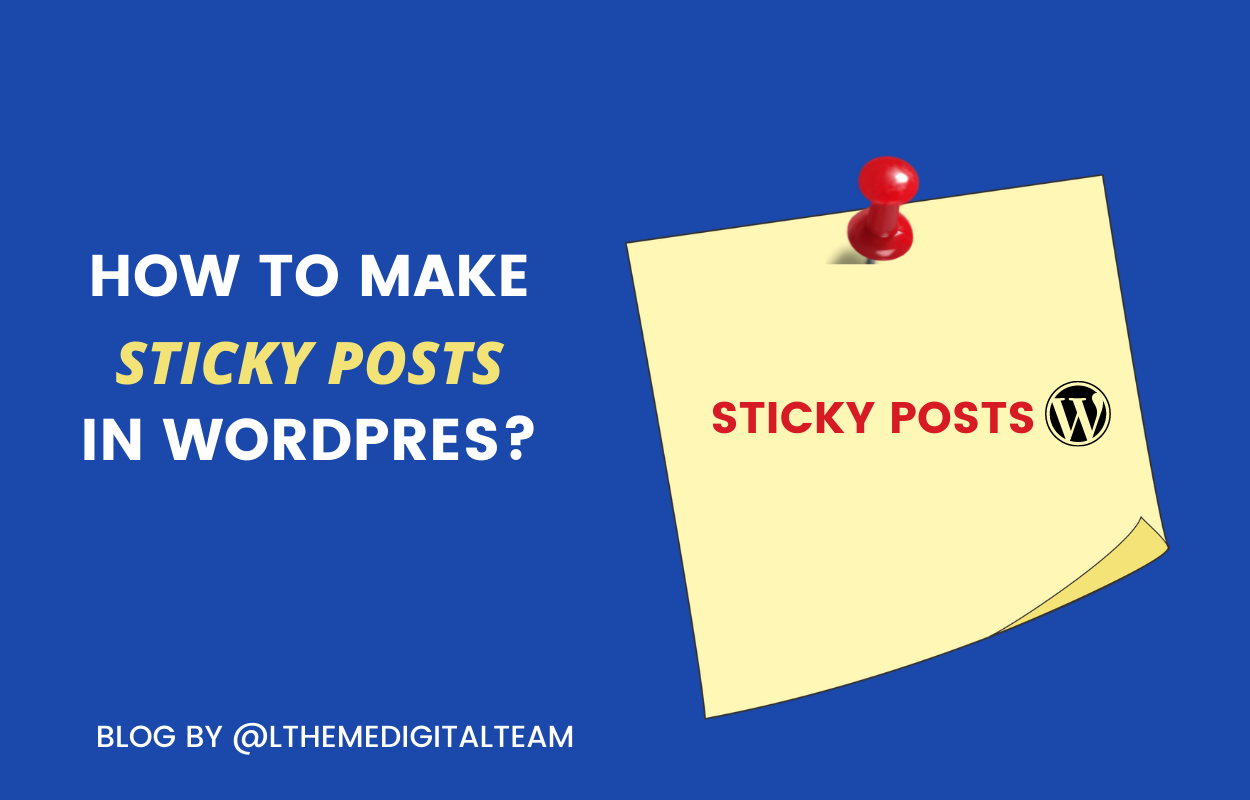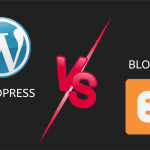Do you own a small business or thinking of starting one? One of the key elements to success in today’s digital world is having a strong online presence. To reach your target audience and compete with bigger companies, having a website for your small business is now necessary. However, many entrepreneurs may feel overwhelmed at the thought of creating a website, especially if they have limited resources and technical skills.
This blog post will guide you through the process of making a professional and effective small business website that can boost your brand, increase visibility, and drive sales. With easy-to-follow steps and tips from web design experts, you’ll be on your way to establishing an impressive virtual storefront in no time.

Image source: https://unsplash.com/photos/person-using-macbook-pro-npxXWgQ33ZQ
Define Your Website’s Purpose
Before diving into the design and development, it’s crucial to clarify the purpose of your website. Is it to inform your audience about your products and services, to sell directly through an online store, or to build a contact list for future marketing efforts? Your aim may also encompass providing customer service with FAQs and support features, sharing your industry expertise through a blog, or showcasing your portfolio if your business is in creative fields.
Every aspect of your website, from the layout to the content, should be aligned with this purpose to create a cohesive user experience. If you’re aiming for e-commerce, you’ll need a shopping cart function and secure payment options. For service-oriented sites, consider having a clear call-to-action (CTA) that prompts visitors to schedule a consultation or request more information. Understanding what you want your website to achieve sets the stage for effective layout planning, content creation, and strategic user engagement. This initial step ensures your website delivers the expected outcomes and provides real value both to your business and to your visitors.
Know Your Target Audience
As a small business, you may have a specific niche or audience that you want to cater to. Conduct market research and gather information about your potential customers’ demographics, interests, online behaviors, and pain points. You can also analyze your competitor’s websites to see what appeals to your target audience and how you can differentiate yourself.
Take online t-shirts as an example. If your target audience is young, fashion-conscious individuals, you’ll want a website like TopMood that’s visually appealing and easy to navigate with high-quality product images. On the other hand, if your t-shirt designs are geared towards sports enthusiasts, incorporating action shots or athlete testimonials in your design can be highly effective.
Regardless of your niche, it’s crucial to know what your target audience wants and needs from a website. This knowledge will inform the design, content, and user experience decisions you make throughout the process.
Choose a Domain Name
Now, it’s time to give your small business website a name. Your domain name is like a virtual address that visitors will type in to access your website, so you need to choose one that’s easy to remember and represents your brand well.
Ideally, your domain name should be the same as or closely related to your business name for consistency and branding purposes. If you’re having trouble finding an available domain name, consider using keywords related to your business or industry. In terms of domain expansions, .com is still the most popular and trustworthy, but there are plenty of other options like .net, .org, and country-specific domains.
Once you have a shortlist of potential domain names, conduct a quick search to make sure they’re not already in use. You can then register your chosen domain name with a reputable domain registrar or through your website hosting provider.
Select a Web Hosting Provider
Website hosting is essentially the process of renting space on a server to store your website’s files and make them accessible to visitors. There are various hosting options available, such as shared, dedicated, VPS, and cloud hosting. Let’s explore each option closely.
Shared Hosting
Shared hosting is the most budget-friendly choice, ideal for small business websites with moderate traffic. In this setup, your website shares server resources with other websites. This option is user-friendly, often including cPanel or similar controls, making it easy to manage your website even if you have minimal technical expertise.
While shared hosting is economical, the flip side is that heavy traffic to other sites on the same server can affect your website’s performance. It is perfect for startups and small enterprises that are just beginning their online journey and want to keep costs low while building their web presence.
Dedicated Hosting
When your small business website expands and demands more control and power, dedicated hosting becomes a vital upgrade. In this hosting mode, you rent an entire server, which means you’re not sharing resources with anyone else. It’s especially suited for businesses with high traffic volumes or those requiring specialized server configurations.
Dedicated hosting comes with a higher price tag, but know that the investment pays off in speed, uptime, and security, with the added advantage of having full administrative access to customize your server to precisely fit your needs.
VPS Hosting
VPS (Virtual Private Server) hosting is a hybrid of shared and dedicated hosting. It offers more control than shared hosting but at a lower cost than dedicated hosting. Here, you share server resources with fewer websites, providing better performance, speed, and security.
VPS works by partitioning one physical server into multiple virtual servers. Each website gets its own dedicated resources like CPU cores, RAM, and bandwidth. Small businesses with moderate traffic and budget constraints can consider this option as it offers more control than shared hosting at a fraction of the cost.
Cloud Hosting
Cloud hosting is an increasingly popular hosting solution, where your website’s data is stored on multiple servers that work together. This setup ensures high availability and scalability, ideal for rapidly growing small businesses or those expecting fluctuations in website traffic.
Among the many advantages of cloud hosting, the most significant is the ability to pay only for what you use, perfect for businesses on a budget. Thanks to the flexibility and scalability of the cloud, you can quickly adjust server resources to meet your website’s needs in real-time.
Plan Your Website Content
Once you’ve identified your hosting solution, the next pivotal step is to map out the content that will populate your website. Your content is not just there to fill space—it’s there to inform, engage, convince, and convert visitors into customers. Start by outlining the main sections your website will need, such as ‘Home’, ‘About Us’, ‘Services/Products’, ‘Testimonials’, and ‘Contact’. Each of these pages will serve to communicate your brand’s story and value proposition.
Consider drafting a content strategy that includes a mix of written content, visuals, and other multimedia elements to cater to different visitor preferences. The written content should focus on clarity, relevance, and SEO optimization, ensuring that it resonates with your audience while making your site more discoverable via search engines. High-quality images or videos of your products or services can vastly improve user engagement and help visitors grasp the tangible benefits you offer. For an added touch of personality, consider including a short video introducing yourself or your team.
Design Your Website
With all the necessary elements in place, it’s time to design your small business website. There are two primary options: using a website builder or hiring a professional web designer.
Website Builders
Website builders offer an affordable and convenient way to create a professional-looking website without any coding knowledge. They come with easy-to-use drag-and-drop interfaces, pre-designed templates, and customizable elements to help you build your site quickly.
Many website builders also have built-in SEO tools, e-commerce features, and integration with third-party apps like Google Analytics and social media platforms. Popular options include Wix, Squarespace, and Weebly.
Hiring a Web Designer
If you have a more complex website with specific design and functionality requirements, it’s best to hire a professional web designer. to do the job. Web designers have the expertise to create custom designs that align with your brand identity and appeal to your target audience.
When hiring a web designer, make sure to review their portfolio, check references, and communicate your needs clearly from the start. You need someone who understands your brand and can translate it into a visually appealing website while ensuring a seamless user experience.
Optimize for SEO
Search Engine Optimization (SEO) is critical for your website’s online visibility and ranking on search engines like Google. By implementing SEO best practices, you can improve your website’s chances of appearing higher in search engine results pages (SERPs) so that potential customers will find you.
To optimize your small business website for SEO, research relevant keywords related to your products or services and use them strategically throughout your content. Optimize your page titles, meta descriptions, and image alt tags to include these keywords. Don’t forget to make sure your website has a fast loading speed, is mobile-friendly, and is regularly updated with high-quality content. Without these components, potential customers may struggle to find your website, limiting your online reach and potential sales.
Create Engaging Content
As mentioned earlier, your website’s content is what converts visitors into customers. To keep visitors on your site longer and increase the likelihood of them taking action, make sure to create engaging and valuable content.
Aside from written content, consider incorporating visuals like images, infographics, or videos. Use clear calls-to-action (CTAs) throughout your website to prompt visitors to take the desired action, such as making a purchase or filling out a contact form. Failure to engage your audience with compelling and relevant content can result in high bounce rates and penalties from search engines.
Test Your Website
Before launching your website, it’s crucial to test its functionality and user-friendliness. Check for broken links, slow loading times, and any design or content issues that may hinder the user experience.
Ask friends, family, or colleagues to provide feedback on their experience navigating your website. You can also consider conducting A/B testing with two versions of your website to see which performs better with your target audience.
Publish Your Website
Congratulations on completing the design of your website! Now it’s time to make it accessible to the public. Publishing your website gives you the freedom to showcase your work and reach a wider audience. Your website must be visually appealing, functional, and user-friendly.
If you’re happy with your website’s design and functionality, publishing it is a breeze. You can do it quickly with a click of a button or by using a website hosting service. Make sure to double-check your website’s design and functionality before you publish it. Now that your website is live, you can sit back and watch people interact with it. You’re one step closer to establishing your online presence.
Promote Your Website
Creating your small business website is just the first step; promoting it is crucial to attract more traffic and generate leads. Some effective ways to promote your website include the following:
- Social media platform: Leverage the power of social media by creating business profiles on popular platforms like Facebook, Instagram, Twitter, and LinkedIn. Share your website’s content regularly to keep your followers engaged and informed. Consistently posting will help you increase followers on Instagram or X who can turn into your loyal customers.
- Email marketing: Use email marketing to reach out to potential customers or leads who have shown interest in your business. You can include links to your website in emails promoting special offers or new products.
- Collaborations and partnerships: Collaborate with other businesses or influencers in your niche to reach a wider audience. This can expose your brand to new potential customers and build credibility for your business.
- Local directories: Submitting your website to local directories like Google My Business, Yelp, and Yellow Pages can improve your visibility in search results for local searches.
- Paid advertising: Consider investing in paid advertising through platforms like Google Ads or social media ads. These options allow you to target specific demographics and reach a highly relevant audience.
- SEO: Lastly, continue to optimize your website for SEO by regularly updating your content, implementing new keywords, and building backlinks. This will improve your search engine ranking and attract more organic traffic to your site.
All these tactics combined can increase your website’s visibility and drive more traffic, ultimately leading to more conversions and business growth. Keep track of your website’s performance using tools like Google Analytics to measure the effectiveness of your promotional efforts and make necessary adjustments.
- Integrating TikTok Icon in Jetpack Social Navigation Using Genericons - July 11, 2025
- Understanding the JInstaller: :install: Error – SQL Duplicate Column Name ‘catid’ - July 11, 2025
- Joomla Web Hosting: A Comprehensive Guide - April 3, 2025









Trackbacks/Pingbacks